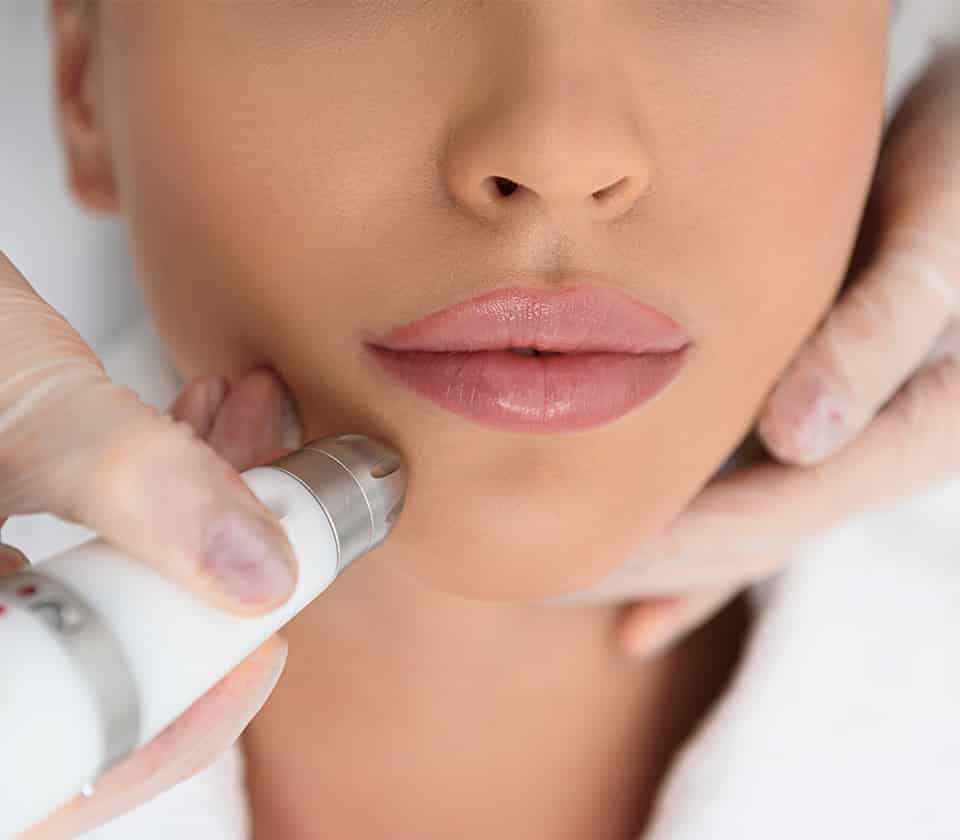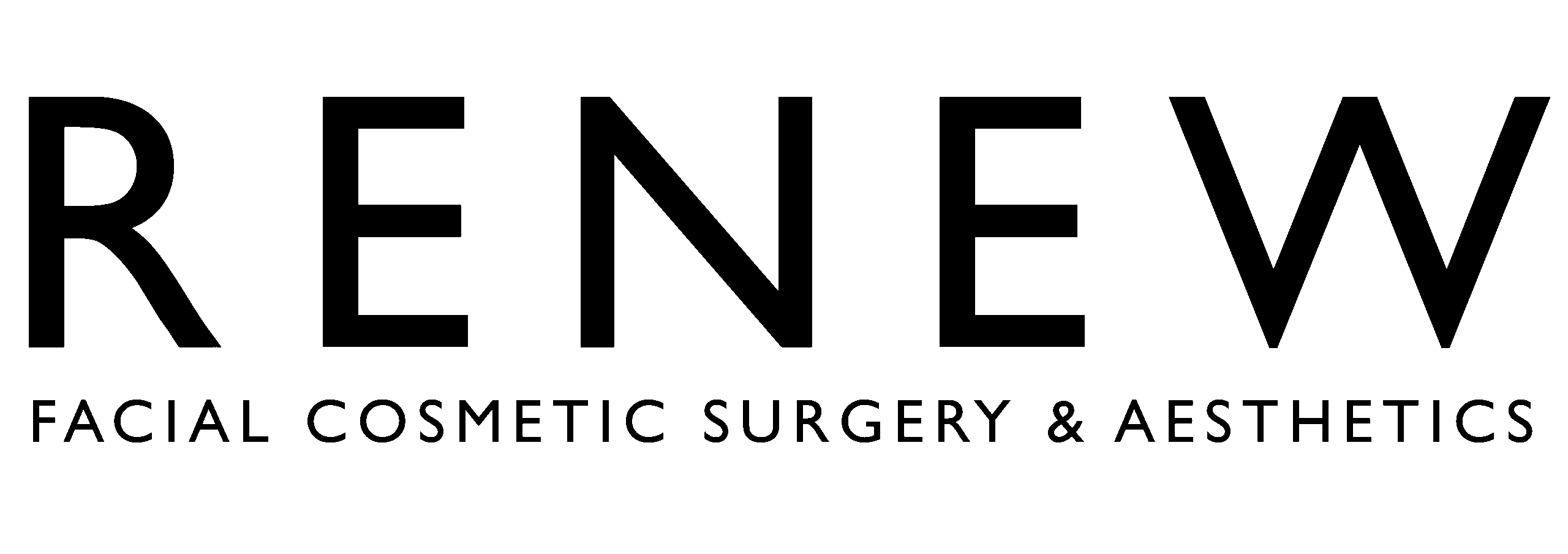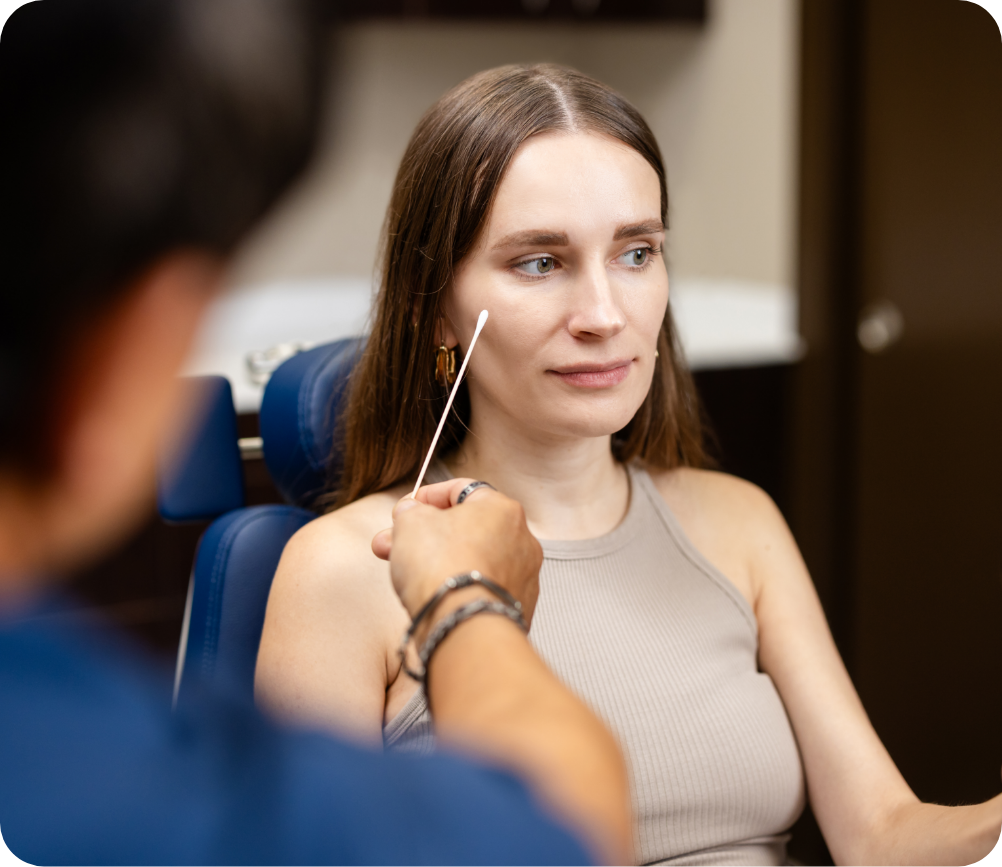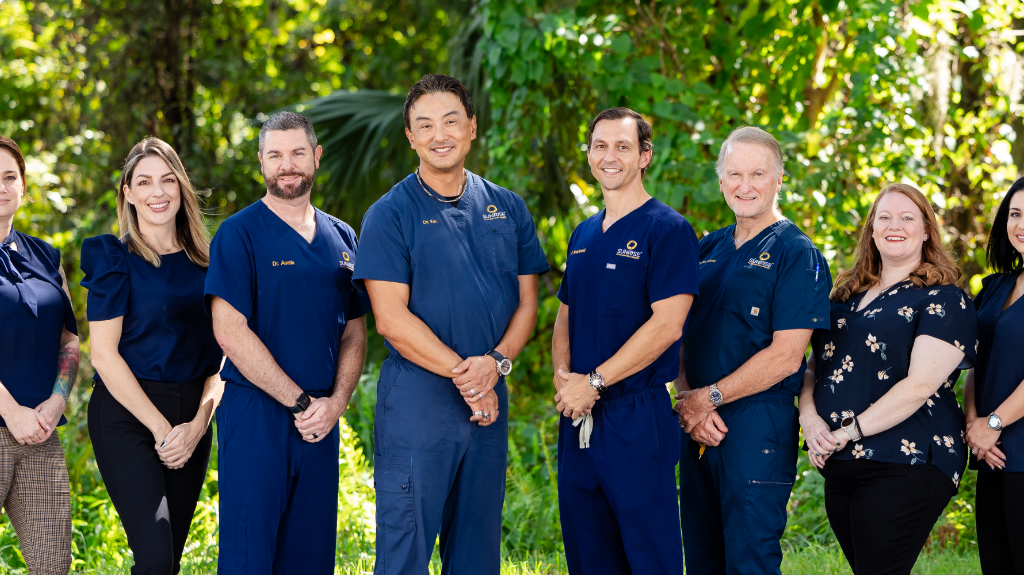This Article Has Been Medically Approved By


Laser skin resurfacing is a procedure that Dr. Kim uses to treat minor facial flaws and improve the appearance of the skin. With laser resurfacing, he can reduce the visibility of fine lines, wrinkles of varying depths, scarring as well as address an uneven skin tone. Furthermore, if sun damage is present, Dr. Kim can use this procedure to improve the patient’s complexion.
What Type of Laser Does Dr. Kim Use?
Dr. Kim uses an ablative fractional CO2 laser to perform his laser resurfacing procedures at Sunrise Facial and Oral Surgery. Dr. Kim uses this particular type of laser because it provides patients with the most dramatic results.
Two treatments are recommended: Dr. Kim believes the second laser resurfacing treatment is vital because it enhances what was accomplished with the first treatment; thus, providing exceptional results. Dr. Kim wants patients to return for their follow-up treatment so they can attain the best results possible, which is why the second treatment is complimentary.
How Does the Fractional CO2 Laser Work?
This laser essentially destroys the epidermis, which is the outermost layer of skin. The light beam an ablative laser delivers is intense, which is why patients receive some type of anesthesia or sedation during their treatment. The destruction of the epidermis and heat from the laser stimulates collagen production, which allows the skin to begin restructuring itself. This restructuring is what eliminates the unwanted facial lesions, acne scars and irregular pigmentation.
While ablative laser resurfacing with a fractional CO2 laser provides dramatic results, with substantial improvements to deeper wrinkles, this treatment will not address severely sagging or deeply wrinkled skin. Furthermore, this procedure is not recommended for individuals who have darker skin tones.
Who Should Consider Laser Resurfacing?
Individuals who are unhappy with the appearance of the skin on their face should consider this procedure. Age spots, freckles, sun damage, scars (e.g., acne, etc.), an uneven skin tone and/or texture can all be addressed with laser resurfacing.
Preparing for a Laser Resurfacing Treatment
Before the laser resurfacing treatment, an initial consultation must be scheduled. During this consultation Dr. Kim will review the patient’s medical history. Dr. Kim will want to discuss the patient’s expectations. He encourages his patients to be candid with him about what they would like to accomplish.
A physical examination of the patient’s face will be performed. This examination helps Dr. Kim determine the results he can achieve with laser resurfacing: For example, the thickness of an individual’s skin may affect his or her final laser resurfacing results.
Prior to a laser resurfacing procedure, patients may be required to:
- Avoid unprotected exposure to the sun for up to two months. Sun exposure prior to the procedure can lead to irregular pigmentation in the areas treated. If this irregular pigmentation occurs, it is permanent.
- Take an antiviral medication before and after treatment to prevent the onset of a viral infection (i.e., herpes).
- Take an antibiotic to prevent a bacterial infection.
- Use a topical retinoid for several weeks before treatment.
As with any procedure, there are risks and complications associated with laser resurfacing. Some of these risks include inflammation, itching, redness and infection.
The Laser Resurfacing Procedure
This outpatient procedure can take from 30 minutes to two hours.
Patients receiving sedation will need to bring a driver with them on the day of their procedure.
During treatment, Dr. Kim uses an intense beam of light to destroy the epidermis; simultaneously, the laser is heating the underlying skin (dermis), which promotes collagen production. As healing begins, new skin that is smoother and tighter forms.
What to Expect After the Procedure
Following this procedure, Dr. Kim will apply an ointment to the skin and then cover it with a dressing. Patients typically experience facial swelling, itching and pain. Ice packs can be applied to reduce swelling and over-the-counter medications can be used to help relieve pain. The average down time for patients following this procedure is 7 days. The treated area may remain pink for several months; however, the improved skin quality will be evident as soon as the area starts to heal. The results achieved can last for years.
There are limitations as to what laser resurfacing can accomplish; however, Dr. Kim will use his years of experience performing facial cosmetic surgery to determine which procedure will provide you with the results you desire.
You can learn about this in person at our upcoming semi-annual seminar Renew You. Space is limited and only a few spots remain! Click here to RSVP .
Ready to set up a consultation? You can submit a consultation request here or give us a call at 321-725-5377 (Melbourne) or 321-255-7724 (Rockledge) to schedule an initial consultation with Dr. Kim.



